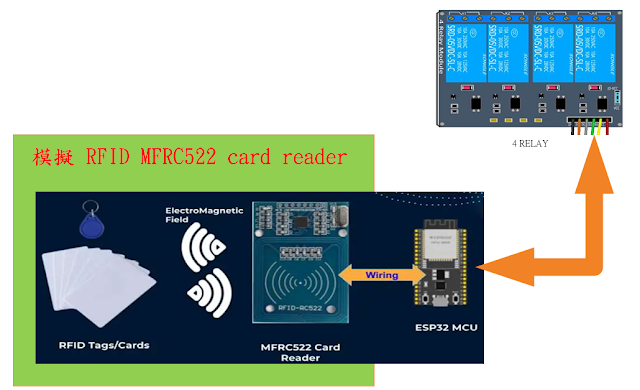1. Arithmetic
There are five arithmetic operators in Verilog.
module Arithmetic (A, B, Y1, Y2, Y3, Y4, Y5);
input [2:0] A, B;
output [3:0] Y1;
output [4:0] Y3;
output [2:0] Y2, Y4, Y5;
reg [3:0] Y1;
reg [4:0] Y3;
reg [2:0] Y2, Y4, Y5;
always @(A or B)
begin
Y1=A+B;//addition
Y2=A-B;//subtraction
Y3=A*B;//multiplication
Y4=A/B;//division
Y5=A%B;//modulus of A divided by B
end
endmodule
2. Sign
These operators simply assign a positive "+" or negative "-" sign to a singular operand. Usually no sign operators is defined, in which case the default "+" is assumed.
module Sign (A, B, Y1, Y2, Y3);
input [2:0] A, B;
output [3:0] Y1, Y2, Y3;
reg [3:0] Y1, Y2, Y3;
always @(A or B)
begin
Y1=+A/-B;
Y2=-A+-B;
Y3=A*-B;
end
endmodule
3. Relational
Relational operators compare two operands and returns an indication of whether the compared relationship is true or false. The result of a comparison is either 0 or 1. It is 0 if the comparison is false and 1 is the comparison is true.
module Relational (A, B, Y1, Y2, Y3, Y4);
input [2:0] A, B;
output Y1, Y2, Y3, Y4;
reg Y1, Y2, Y3, Y4;
always @(A or B)
begin
Y1=A<B;//less than
Y2=A<=B;//less than or equal to
Y3=A>B;//greater than
if (A>B)
Y4=1;
else
Y4=0;
end
endmodule
4. Equality and inequality
Equality and inequality operators are used in exactly the same way as relational operators and return a true or false indication depending on whether any two operands are equivalent or not.
module Equality (A, B, Y1, Y2, Y3);
input [2:0] A, B;
output Y1, Y2;
output [2:0] Y3;
reg Y1, Y2;
reg [2:0] Y3;
always @(A or B)
begin
Y1=A==B;//Y1=1 if A equivalent to B
Y2=A!=B;//Y2=1 if A not equivalent to B
if (A==B)//parenthesis needed
Y3=A;
else
Y3=B;
end
endmodule
5. Logical
Logical comparison operators are used in conjuction with relational and equality operators as described in the relational operators section and equality and inequality operators section. They provide a means to perform multiple comparisons within a a single expression.
module Logical (A, B, C, D, E, F, Y);
input [2:0] A, B, C, D, E, F;
output Y;
reg Y;
always @(A or B or C or D or E or F)
begin
if ((A==B) && ((C>D) || !(E<F)))
Y=1;
else
Y=0;
end
endmodule
6. Bit-wise
Logical bit-wise operators take two single or multiple operands on either side of the operator and return a single bit result. The only exception is the NOT operator, which negates the single operand that follows. Verilog does not have the equivalent of NAND or NOR operator, their funstion is implemented by negating the AND and OR operators.
module Bitwise (A, B, Y);
input [6:0] A;
input [5:0] B;
output [6:0] Y;
reg [6:0] Y;
always @(A or B)
begin
Y(0)=A(0)&B(0); //binary AND
Y(1)=A(1)|B(1); //binary OR
Y(2)=!(A(2)&B(2)); //negated AND
Y(3)=!(A(3)|B(3)); //negated OR
Y(4)=A(4)^B(4); //binary XOR
Y(5)=A(5)~^B(5); //binary XNOR
Y(6)=!A(6); //unary negation
end
endmodule
7. Shift
Shift operators require two operands. The operand before the operator contains data to be shifted and the operand after the operator contains the number of single bit shift operations to be performed. 0 is being used to fill the blank positions.
module Shift (A, Y1, Y2);
input [7:0] A;
output [7:0] Y1, Y2;
parameter B=3; reg [7:0] Y1, Y2;
always @(A)
begin
Y1=A<<B; //logical shift left
Y2=A>>B; //logical shift right
end
endmodule
8. Concatenation and Replication
The concatenation operator "{ , }" combines (concatenates) the bits of two or more data objects. The objects may be scalar (single bit) or vectored (muliple bit). Mutiple concatenations may be performed with a constant prefix and is known as replication.
module Concatenation (A, B, Y);
input [2:0] A, B;
output [14:0] Y;
parameter C=3'b011;
reg [14:0] Y;
always @(A or B)
begin
Y={A, B, (2{C}}, 3'b110};
end
endmodule
9. Reduction
Verilog has six reduction operators, these operators accept a single vectored (multiple bit) operand, performs the appropriate bit-wise reduction on all bits of the operand, and returns a single bit result. For example, the four bits of A are ANDed together to produce Y1.
module Reduction (A, Y1, Y2, Y3, Y4, Y5, Y6);
input [3:0] A;
output Y1, Y2, Y3, Y4, Y5, Y6;
reg Y1, Y2, Y3, Y4, Y5, Y6;
always @(A)
begin
Y1=&A; //reduction AND
Y2=|A; //reduction OR
Y3=~&A; //reduction NAND
Y4=~|A; //reduction NOR
Y5=^A; //reduction XOR
Y6=~^A; //reduction XNOR
end
endmodule
10. Conditional
An expression using conditional operator evaluates the logical expression before the "?". If the expression is true then the expression before the colon (:) is evaluated and assigned to the output. If the logical expression is false then the expression after the colon is evaluated and assigned to the output.
module Conditional (Time, Y);
input [2:0] Time;
output [2:0] Y;
reg [2:0] Y;
parameter Zero =3b'000;
parameter TimeOut = 3b'110;
always @(Time)
begin
Y=(Time!=TimeOut) ? Time +1 : Zero;
end
endmodule
|
2019年12月14日 星期六
Verilog HDL Operators
訂閱:
張貼留言 (Atom)
WOKWI 模擬RFID UID產生 暨 4LED on,off,flash控制(1)
WOKWI 模擬RFID UID產生 暨 4LED on,off,flash控制(1) #include < ArduinoMqttClient.h > #include < WiFi.h > //MFRC522 程式庫 模擬mfrc522 送出卡號...

-
python pip 不是内部或外部命令 -- 解決方法 要安裝 Pyqt5 1. 首先,開啟命令提示字元。 2. 輸入 pip3 install pyqt5 好像不能執行 ! ! 錯誤顯示 : ‘ pip3 ’ 不是內部或外部命令、可執行的程式或批...
-
課程講義 下載 11/20 1) PPT 下載 + 程式下載 http://www.mediafire.com/file/cru4py7e8pptfda/106%E5%8B%A4%E7%9B%8A2-1.rar 11/27 2) PPT 下載...
-
• 認 識 PreFix、InFix、PostFix PreFix(前序式):* + 1 2 + 3 4 InFix(中序式): (1+2)*(3+4) PostFix(後序式):1 2 + 3 4 + * 後 序式的運算 例如: 運算時由 後序式的...

沒有留言:
張貼留言